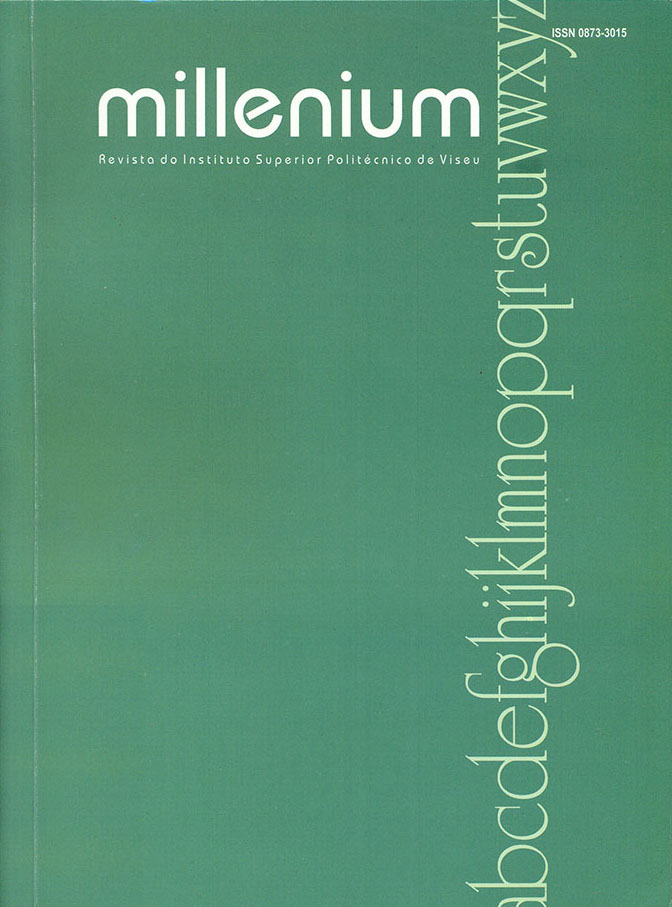Infinito uma história a contar
Abstract
O infinito sempre foi um tema controverso que afectou a mente humana. A sua aceitação como objecto de estudo na Matemática não foi pacífica, sendo ainda muito recente, apesar da longa história que lhe está associada. Faz-se uma pequena descrição das ideias relacionadas a este conceito desde a Grécia antiga até à Idade Média, distinguindo depois os séculos após o Renascimento devido à riqueza de descobertas que ocorreram. Salienta-se que só no século XIX é que Cantor mostrou, relativamente ao tamanho dos conjuntos, que há infinitos iguais e diferentes. As suas teorias para a teoria de conjuntos revolucionaram então a Matemática. O infinito actual finalmente tinha sido incorporado nela. Apesar de toda esta revolucionária e fabulosa teoria, aos poucos foram-se descobrindo algumas contradições, mas vários dos seus problemas foram posteriormente solucionados no século XX.
Downloads
References
ARISTÓTELES (1996 [350 a.C.]). Física. Madrid: Consejo superior de investigaciones científicas.
BOLZANO, Bernard (1991 [1851]). Las paradojas del infinito. México: Mathema.
BOYER, Carl (1998 [1968]). História da Matemática. (2ª edição). São Paulo: Editora Edgar Blücher Lda.
COHEN, Paul (1966). A teoria de conjuntos e a hipótese do contínuo. In GÖDEL, Kurt (1979). O teorema de Gödel e a hipótese do contínuo. Lisboa: Fundação Calouste Gulbenkian. p. 1-182.
GALILEI, Galileo (1989 [1638]). Two new sciences. Toronto: Wall & Thompson.
GÖDEL, Kurt (1964). O que é o problema do contínuo de Cantor? In GÖDEL, Kurt (1979). O teorema de Gödel e a hipótese do contínuo. Lisboa: Fundação Calouste Gulbenkian. p. 217-244.
HEATH, Thomas (1998 [1949]). Mathematics in Aristotle. Bristol: Thoemmes press.
HILBERT, David (1926). Sobre o infinito. Mathematische Annalen, vol. XCV. In HILBERT, David (2003 [1898-99]). Fundamentos da geometria. Lisboa: Gradiva. p. 234-255.
HILBERT, David (1990 [1902]). Sur les problèmes futurs des Mathématiques. Sceaux : Éditions Jacques Gabay.
NEWTON, Isaac (2004 [1742]). O método das fluxões e das séries infinitas. Associação de Professores de Matemática e Editorial Prometeu.
OLIVEIRA, Augusto (1994). Infinitésimos e infinitamente grandes: o âmago da dificuldade. In CARAÇA, Bento (1998 [1948]). Conceitos fundamentais da Matemática. (2ª edição). Lisboa: Gradiva.
SANTO AGOSTINGO (1999 [413-427]). A cidade de Deus (contra os pagãos). (3ª edição). Petrópolis: Editora Vozes. Parte II.
STRUIK, Dirk (1997 [1948]). História concisa das Matemáticas. (3ª edição). Lisboa: Gradiva.
Downloads
Published
How to Cite
Issue
Section
License
Authors who submit proposals for this journal agree to the following terms:
a) Articles are published under the Licença Creative Commons (CC BY 4.0), in full open-access, without any cost or fees of any kind to the author or the reader;
b) The authors retain copyright and grant the journal right of first publication, allowing the free sharing of work, provided it is correctly attributed the authorship and initial publication in this journal;
c) The authors are permitted to take on additional contracts separately for non-exclusive distribution of the version of the work published in this journal (eg, post it to an institutional repository or as a book), with an acknowledgment of its initial publication in this journal;
d) Authors are permitted and encouraged to publish and distribute their work online (eg, in institutional repositories or on their website) as it can lead to productive exchanges, as well as increase the impact and citation of published work
Documents required for submission
Article template (Editable format)















